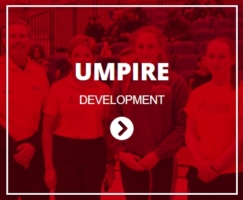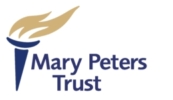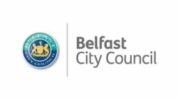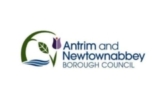Historical Background
Origins:
The Irish Ladies Hockey Union was formed in 1894. The first true women’s international match was played in Dublin 1896 when Ireland defeated England by two goals to nil. In 1900, the provinces of Ireland produced their own unions and as a result the beginnings of the Ulster Women’s Hockey Union (UWHU), as it is today, was formed. The union comprised an honorary secretary, honorary treasurer and three further committee members all of whom worked together to organise and develop club hockey in Ulster. Initially at the turn of the century, hockey in Ulster was concentrated in counties Antrim and Down. A league system was established and each team played two matches against every other team in their section. Annual inter-county matches were also held at both junior and senior level to provide further competition. During the 1906-07 season, two cups were presented to the UWHU to be given to the winning teams in the Senior and Junior League (both of these are still played for annually) and, in addition, badges were donated to be awarded to the winners of the schools cup competition.
1914-1939:
During the First World War, many clubs were forced to disband due to the number of women working for their country in the war effort.
After the war was over, women’s hockey slowly started to gain momentum again; Knock Ladies HC continued to produce the most successful team, as they had done in the pre-war years, and won the Ulster Shield undefeated from 1911-1924 (excluding 1916-1919 when the competition was not held).
During the 1920s, interest in the game increased and Ulster established links with clubs on the mainland including Lancashire and Cheshire, with whom they played matches each season both in the Province and in England
Hockey links were established further afield which resulted in the visit of teams from America, South Africa and Germany during the seasons of 1933-34, 1936-37 and 1937-38 respectively. During this decade a north west branch of the UWHU was created in order to promote hockey in areas of Ulster other than Antrim and Down, which had up until this point produced the bulk of teams competing in the various annual league and cup competition
During the Second World War, the decision was made that it would be impracticable to run competitive hockey, either league or cup, for the rest of the duration but that friendly matches should be arranged to maintain some interest. All the inter-provincial matches which had become annual events in the hockey calendar were also cancelled, although Ulster was the only province at war. The council of the UWHU in office at the time was to remain until the conclusion of the war and the subsequent resumption of competitive club hockey.
During the course of WWII , the first six-a-side tournament was held in memory of Mrs Charters who had been President of the UWHU for the 1923-24 season and Vice-President for a further five years afterwards.
1940s and 1950s:
Due to the cessation of hostilities, a new council was elected in September 1945 and competitions resumed, however it was not until the 1947-48 season that the numbers of women playing hockey returned to the level reached before WWII. It was a time of rebuilding the reputation of the game through the coaching of promising young players
Over the next decade, the standard of play steadily improved. In the 1951-52 season annual general meeting it was reported that hockey in Ulster was in a healthy state and that the school team had won the inter-provincial title for the sixth successive time since the war. The following year, Ulster won the Senior inter-provincial title for the first time since the war had ended and provided eight players for the Irish national team.
The 1954-55 season saw the most successful year for Ulster hockey up until that time, with Ulster winning the Senior, Junior and school inter-provincial, as well as supplying most of the players for the Irish senior team. There was also a record number of teams affiliated to the UWHU making it the largest union in the Irish Ladies Hockey Union. In 1956 the National Playing Fields Association tournament was established for both schools and clubs. The 1959 season had particularly appalling weather, resulting in the cancellation of many matches. As so many grass pitches were unplayable, several all-weather pitches were laid in the hope that these would alleviate some of the difficulties, although the UWHU ruled that no Ulster Shield matches were to be played on such a surface.
1960s:
Changes were afoot for hockey in Ulster: more emphasis was placed on pre-match preparation such as training and coaching sessions; and the Central Council of Physical Recreation (CCPR), later to become known as Northern Ireland Sports Council, organised weekly training sessions in a Belfast recreation centre for senior league players (this was well supported, but eventually abandoned in 1963 due to lack of interest).
The decade saw a change in players’ uniform in addition to tactical development. Gone were the days of the pleated tunic which had for so long dominated the hockey field together with the long black stockings, replaced in the 1950s by knee length socks and the girdle; players preferred to wear a pleated skirt or a wrap-over kilt. The twenty five year bully disappeared, and became a fifteen yard hit out, now a sixteen year hit out.
In October 1967, the International Federation for Women’s Hockey Associations (IFWHA) held its conference in Edinburgh following which the Canadian National side visited Ulster and played several matches. Links with the Canadian officials were established and in February 1969 QUB’s hockey club completed a successful tour of Canada
At the start of 1968-69 season, publicity improved greatly, and series of local television programmes were produced by the BBC about senior Ulster sports clubs, with Instonians Ladies hockey club representing women’s hockey.
1970s:
The beginning of the 1970s saw the continued success of the Ulster inter-provincial teams with all three winning their respective titles in the 1970-71 seasons. Additional annual tournaments were introduced for different skill levels at various points in the season, such as one for Qualifying League teams in May and one in September for up-and-coming players before going to university.
During the 1971-72 season the hockey union began to experience problems as a result of “the Troubles” in Northern Ireland – travel to and through certain areas of the Province was hazardous or even impossible and it became difficult to maintain interest. This problem was partly solved by the introduction of Plate competitions at all levels for the teams knocked out in the first or second round of the cup. The Shields and cups belonging to the Ulster Women’s Hockey Union were kept in a bank for fear that they might be lost during a bombing if they were sent to be engraved.
In September 1973, a New Zealand touring team due to play against Ulster in Coleraine refused to come due to the civil unrest and instead went to Connaught. Even within Ireland teams refused to travel and in 1974 the Reserves tournament was cancelled because Munster and Connaught would not play in Belfast. In September 1975, however, the Japanese team did come to play in Ulster.
The 1974-75 season showed women’s hockey in Ulster at its lowest with fewer than 100 teams involved on a regular basis – the lowest in 25 years, but it has steadily improved annually since then. Due to the increased number of clubs in its area the north-west branch of the UWHU was permitted to disband in 1977 and its teams to participate with the rest of the Province.
By 1979 the UWHU was able to report that hockey was in a healthy position as regards interest and players but not where facilities or umpires were concerned. Disquiet was also expressed about the severe lack of coaches qualified to take hockey in Ulster, a situation which was to be remedied during the course of the next decade
1980s:
The 1980s saw the formation of several new associations including the Indoor Hockey Association formed in 1981 following the successful introduction of a two division league at Maysfield leisure centre the previous year. The Coaching Association also formed from a committee of the Ulster Women’s Hockey Union set up in 1982.
The Coaching Association has been responsible for innumerable courses for players from school age to senior Ulster team standard, as well as for coaches working towards preliminary, standard or advanced awards.
The Indoor Hockey Association has developed throughout Ireland to the extent that annual inter-provincial tournaments are held as well as various additional local competitions such as the U19 league.
One of the most fundamental and significant changes to the game of hockey occurred in 1987 with the disappearance of the bully-off as the means of starting the game, a pass back as in football being preferred. Other changes included a hit-in alternative to a push-in for a ball over the side line, restriction on the use of the hand, and permission for a player to raise her stick about shoulder height before and/or after striking the ball, providing such an action was not dangerous to other players
The continuing number of participants in women’s hockey in turn created an increased demand for additional competitions beyond those run annually by the UWHU, therefore many tournaments and six-a-side events were established across the Province throughout the year including the off-season period. The league system was re-structured on several occasions to allow increased opportunity for promotion, which naturally also raised the chances of relegation.
The Senior League was run for two years on an integrated basis whereby first elevens and reserve teams could both play, however this has now reverted to the inclusion of the first eleven teams only. The qualifying, intermediate and junior leagues have all been altered in recent years; they are currently operated an automatic two up, two down promotion and relegation system.
A new innovation to the sport during the Eighties was the introduction of sponsorship from various local and national companies for both the Senior League and the Ulster Shield; in addition, sponsors also provided financial assistance for tournaments, schools’ events, indoor hockey competitions and some even sponsored individual clubs or teams. Technology also played its part during the development of hockey in the 1980s as regards equipment. There were a number of clubs in Ulster who installed floodlit facilities which enabled outdoor training to continue throughout the winter, weather permitting, for both club sides and Ulster teams
By 1985 artificial pitches had been laid in European countries including mainland Britain and Southern Ireland, however Ulster still did not have one of its own. It was decided that Ulster Hockey was going to be left behind in the backwaters unless a pitch was laid in the near future, especially as most international matches were being played on the new surface thus the Province was losing these games to Dublin and its Astroturf. Finally in 1987, a poligras pitch was laid at Lisnagarvey just outside Lisburn, Country Antrim, for the use of both men’s and women’s hockey. To date it has proved to be invaluable for Ulster at all levels for practices as well as providing an impressive venue for both interprovincial matches and visits from touring teams
For almost twenty years two clubs have dominated Senior women’s hockey in Ulster- Portadown and Pegasus- however, as the new decade begins, their grasp of the top places is slipping and other clubs are coming to the fore. Such competition can only be good for the future development of hockey in the Province increasing interest for both players and spectators alike.
Source: W. J. McDowell, An investigation into current trends in school-girl hockey viewed from the historical perspective of women’s hockey in Ulster, (dissertation), 1990































